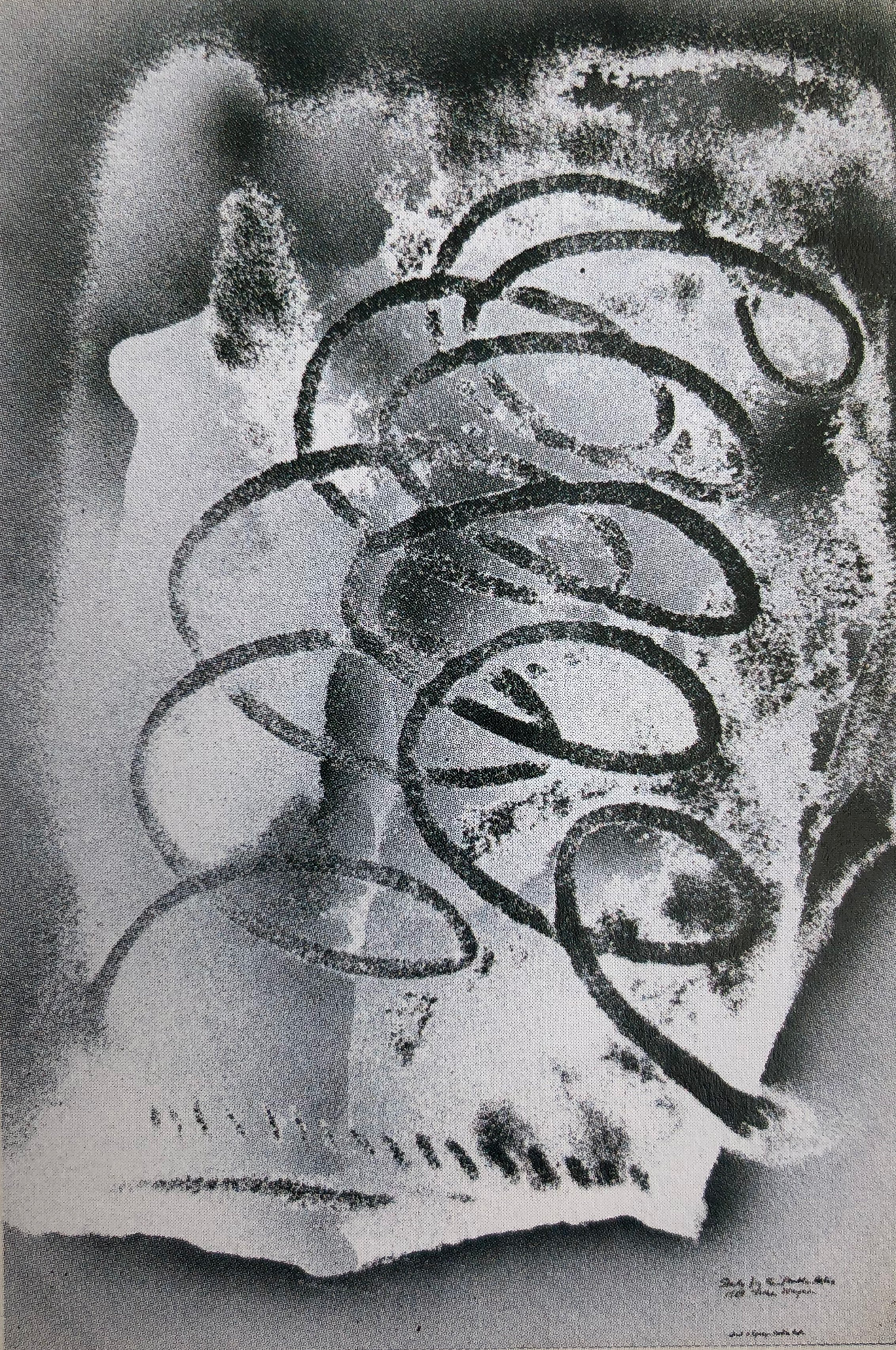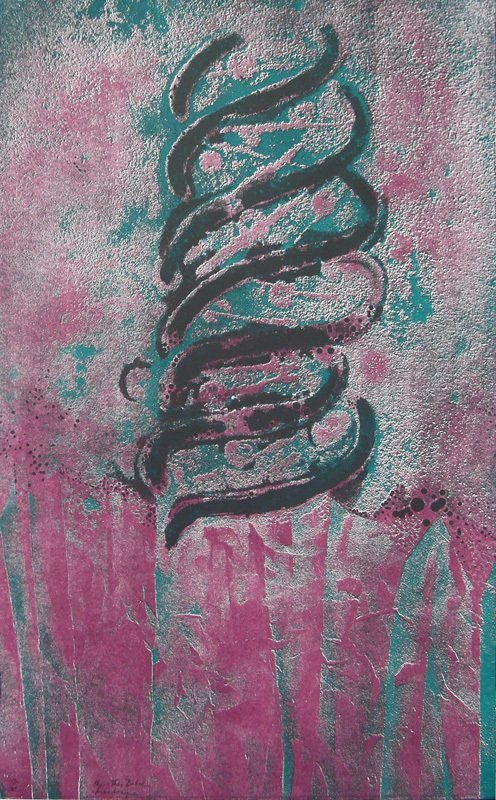JUNE WAYNE・Art & Science
The Terrestrial Works
Genetics
“I was fascinated by the genes total indifference to the individual, that we are the combination of predetermined accidents. We don’t know how those genes are going to behave, how long they will behave well, or badly, or which one is damaged, and so on. The paradox of knowing that much about ourselves, yet nonetheless being at the mercy of this system of molecules was very much in my mind.”
“Wayne produced the Burning Helix Series (1970) inspired by the double-helix forms of the DNA and RNA molecules. She was influenced by James Watson’s 1968 book on his and Francis Crick’s discovery in 1953 of the structure of the DNA molecule. The shapes in Dusty Helix were loosely based on diagrams of the six-sided modules in each DNA helix. Burning Helix was prompted by a DNA amino acid sequence.”
“It now appears we are composed of an infinitude of particle and gene-modules of which some percentage will be unstable, misplaced or defective. Just as a fault in a miniaturized computer circuit nearly blew up the Southern Hemisphere during one of the atomic test some years ago, so the current experiments that unite the genes of viruses with the genes of our friendly bacillus coli well could decimate our species.”
“In 1970 Wayne visited Jonas Salk at his namesake Institute in La Jolla, where he shared with her a slide of a bacterium DNA. ‘It looked like a necklace, not a very pretty one, but nonetheless like a piece of jewelry. So I used that here and many other times.’”
“The artist roams those areas of modern thought where differences between art and science, art and music, or art and writing blur. This is where Wayne’s conceptual and technical innovations are apt to happen. She imagines the aesthetic meanings and shapes of ideas, whether in quantum physics, in fugues, or in the disturbances of perception due to optical interferences. She is also energized by structural possibilities as distinct as those in musical composition or the design of bridges and aircraft. The double helix of DNA itself was a source for several years of Wayne’ image making in the early 1970’s.”
“The unfolding universe of the brain is awe-inspiring, even frightening. How well I remember that the breaking of the genetic code destroyed some of my fondest illusions and refracted all humanity through a strange new prism.”












